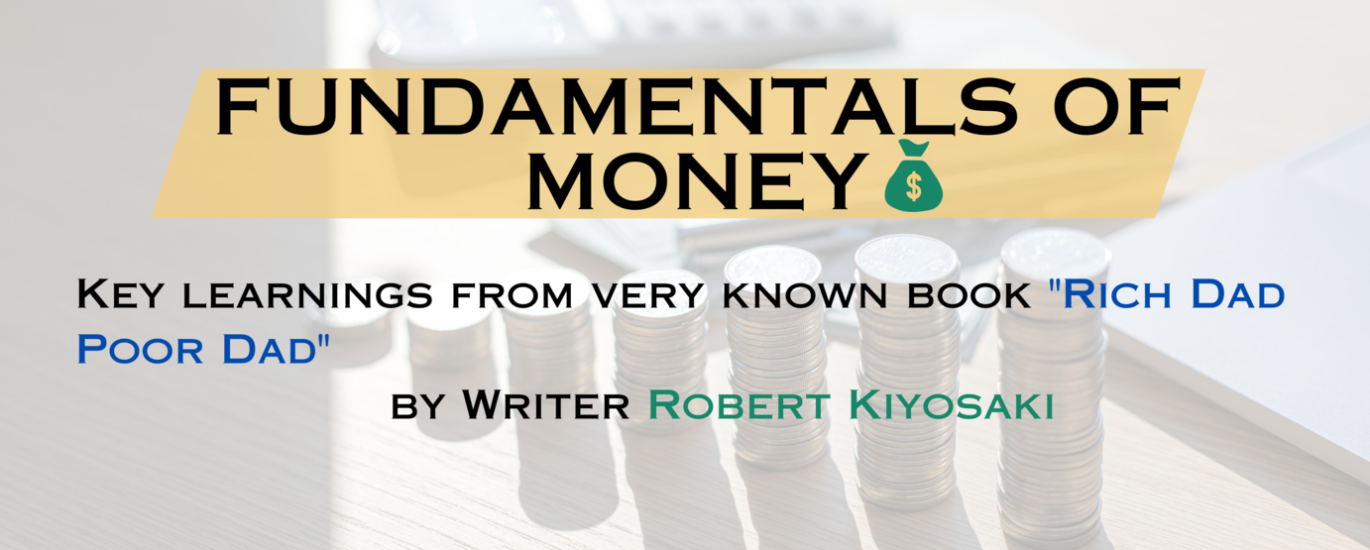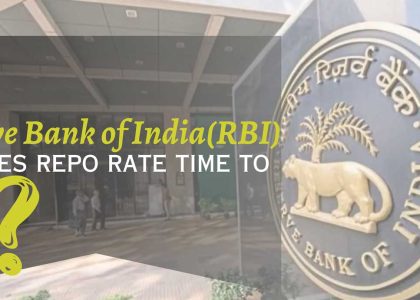Summary of very famous finance book “Rich Dad Poor Dad”
“Rich Dad Poor Dad” by Robert Kiyosaki is a personal finance book that explores the different approaches to money management that he learned from his two fathers: his biological father (poor dad) and his best friend’s father (rich dad). The book is structured around Kiyosaki’s experiences with each of his fathers and the lessons that he learned from them, which he then applies to his own life and shares with readers.
Part One: Rich Dad, Poor Dad
In the first part of the book, Kiyosaki introduces the two fathers and explores their different approaches to money. His biological father, whom he refers to as “poor dad,” was a highly educated man who worked hard for a steady paycheck. His best friend’s father, whom he refers to as “rich dad,” was a self-made entrepreneur who built his wealth through investments and business ventures.Kiyosaki explains that his poor dad focused on earning a steady paycheck and saving money, while his rich dad focused on building assets and generating passive income. He argues that his poor dad’s approach to money is typical of the middle class, who tend to prioritize job security and steady income over wealth-building.
Part Two: The Rich Don't Work for Money
In the second part of the book, Kiyosaki explores the idea that the rich do not work for money; rather, they use money to work for them. He explains that the wealthy focus on building assets that generate passive income, such as rental properties, stocks, and businesses, rather than relying on a job for income. Kiyosaki also emphasizes the importance of financial education, arguing that traditional education does not teach people how to manage money effectively. He encourages readers to educate themselves about money and investing, and to learn how to make their money work for them.
Part Three: Mind Your Own Business
In the third part of the book, Kiyosaki emphasizes the importance of entrepreneurship and starting your own business. He argues that working for someone else will never make you wealthy, and that the only way to achieve financial independence is to start your own business. Kiyosaki encourages readers to develop an entrepreneurial mindset and to take calculated risks in order to build wealth. He also emphasizes the importance of financial statements, such as income statements and balance sheets, in tracking your progress and making informed financial decisions.
Part Four: The History of Taxes and the Power of Corporations
In the fourth part of the book, Kiyosaki explores the history of taxes and the power of corporations. He explains that taxes are the largest expense for most people, and that the wealthy use corporations to minimize their tax liability.Kiyosaki encourages readers to start their own corporations in order to take advantage of tax benefits and to protect their personal assets. He also emphasizes the importance of surrounding yourself with a team of professionals, such as accountants and lawyers, who can provide guidance and advice on financial matters.
Part Five: The Rich Invent Money
In the final part of the book, Kiyosaki discusses the idea that the rich invent money. He argues that the wealthy are able to create new opportunities and to generate wealth through innovation and creativity. Kiyosaki encourages readers to think creatively about money and to look for opportunities to create value and generate income. He also emphasizes the importance of taking action and putting your ideas into practice in order to achieve financial success.
Key Lessons from "Rich Dad Poor Dad"
1. Financial education is key to building wealth.
Kiyosaki argues that traditional education does not teach people how to manage money effectively,
which is why many people struggle with debt and financial insecurity. He encourages readers to educate themselves about money and investing resources in order to accomplish financial independence.
2. Focus on building assets that generate passive income.
Kiyosaki explains that his poor dad focused on earning a steady paycheck and saving money, while
his rich dad focused on building assets and generating passive income. He argues that his poor dad’s approach to money is typical of the middle class, who tend to prioritize job security and steady income over wealth-building.
3. Take calculated risks and embrace entrepreneurship.
Kiyosaki encourages readers to take calculated risks and to develop an entrepreneurial mindset. He argues that working for someone else will never make you wealthy, and that the only way to achieve financial independence is to start your own business.
4. Use corporations to minimize tax liability and protect personal assets.
Kiyosaki discusses the importance of using corporations to minimize tax liability and protect personal assets. He encourages readers to start their own corporations and to surround themselves with a team of professionals who can provide guidance and advice on financial matters.
5. Think creatively about money and look for opportunities to create value.
Kiyosaki emphasizes the importance of thinking creatively about money and looking for opportunities to create value and generate income. He encourages readers to take action and put their ideas into practice in order to achieve financial success. In short, Kiyosaki believes that traditional education does not teach people how to manage money, which is why many people struggle with debt and financial insecurity. He encourages readers to learn about investing, cash flow management, and other financial topics in order to achieve financial freedom. Kiyosaki explains that assets generate income, while liabilities drain income.
He encourages readers to focus on acquiring assets, such as rental properties and stocks, rather than accumulating liabilities like credit card debt and expensive cars. Overall, “Rich Dad Poor Dad” is a valuable resource for anyone who wants to improve their financial situation. The book provides practical advice and actionable strategies for achieving financial independence, and encourages readers to think differently about money and wealth. Whether you are just starting out on your financial journey or looking to take your finances to the next level, “Rich Dad Poor Dad” is a must-read book.
About author
RAJANI AGGARWAL is a proprietor at Rajani Aggarwal & Co. She has more than 12 years of experience in Financial Management, Tax planning, Statutory compliance and Corporate Governance. Rajani holds professional degrees of Company Secretary from Institute of Company Secretaries of India (ICSI) in 2016, Cost and Management Accountant (CMA) from Institute of Cost Accountants of India (ICAI) in 2010 and certification in Intellectual Property Rights from ICSI. She is graduated from Delhi University in year 2010. You may write her at cs.cmarajani@gmail.com



